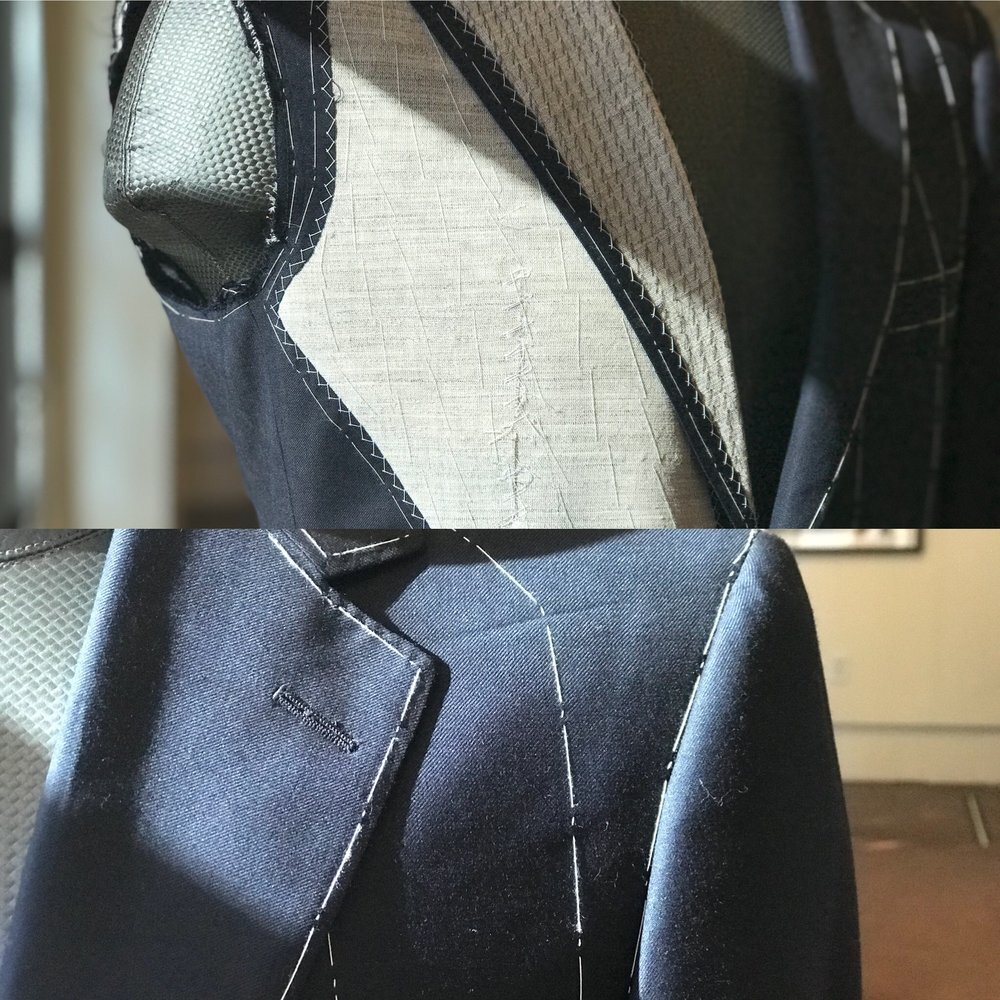Bespoke Tailor Perth: Crafting the Perfect Suit for You
Bespoke Tailor Perth: Crafting the Perfect Suit for You
Blog Article
Recognizing the Tailoring Refine: From Fabric Selection to Final Fitting for the Suitable Closet
The customizing procedure is a complicated interplay of art and science, starting with the vital choice of fabric selection and finishing in the exact modifications of final installations. Each material type brings unique top qualities that influence not only the visual charm but additionally the garment's durability and suitability for numerous events.
Significance of Textile Choice
Choosing the appropriate material is important in the tailoring procedure, as it directly affects the comfort, durability, and total aesthetic of the last garment. The choice of textile sets the structure for the garment's performance, functionality, and design. Different textiles possess unique properties, such as breathability, stretch, and weight, which can substantially affect just how the garment drapes and fits the body.

A tailored piece made from an appropriate textile not just showcases craftsmanship but also boosts the user's confidence. Consequently, recognizing the subtleties of material selection is extremely important for any kind of tailoring endeavor. It guarantees that the end product not only fulfills the visual desires of the customer however also straightens with functional needs, consequently achieving an unified balance in between type and feature in the tailored closet.
Sorts Of Fabrics and Their Usages
Comprehending the various kinds of fabrics offered is vital for making educated decisions throughout the tailoring process. Each textile possesses one-of-a-kind qualities that determine its suitability for details garments and occasions.
Its convenience allows it to be tailored into every little thing from shirts to dresses. Its natural flexibility aids garments maintain shape over time.
Silk emanates deluxe and is light-weight, making it perfect for eveningwear and delicate blouses; nevertheless, it needs careful handling as a result of its fragility. Bed linen, with its distinctive finish, is a popular option for warm environments, supplying a crisp and ventilated feeling, yet it wrinkles conveniently, which may affect the garment's appearance.
Synthetic fabrics, such as polyester and nylon, offer sturdiness and resistance to wrinkles, making them appropriate for daily wear and energetic garments. Comprehending these material kinds and their buildings enables far better decision-making, making certain that each customized item not just fits well however likewise lines up with the designated purpose and occasion.
The Tailoring Techniques Explained
The art of customizing depends on a selection of methods that transform fabric into well-fitted garments. Central to this procedure is pattern composing, where a dressmaker produces design templates based on the customer's dimensions and preferred style. This first action makes certain that the garment will certainly fit the user appropriately before any type of cutting occurs.
When patterns are established, cutting methods come into play. Accuracy is critical as errors can cause misfitting garments. Tailors usually use different cutting approaches, such as single-layer cutting for intricate layouts and multiple-layer cutting for efficiency on typical patterns.
Basting is one more important technique, enabling tailors to momentarily stitch textile assemble for an initial fitting (tailor perth). This method uses the opportunity to examine the drape and overall shape before final sewing
Seaming methods, consisting of flat-felled seams and French joints, enhance the garment's toughness and aesthetic charm. Tailors additionally utilize strategies such as interfacing and padding to supply structure and shape to details areas, like collars and shoulders.
Finally, ending up techniques, consisting of hemming and side finishing, make sure you could try this out the garment's longevity while offering a sleek look. Together, these methods create the backbone of efficient customizing, causing beautiful, tailor-made garments.

Suitable Modifications and Considerations
After the initial customizing strategies have been applied and the garment is created, suitable adjustments become extremely important to accomplishing the ideal fit. These adjustments resolve different aspects of the garment, guaranteeing it contours to the wearer's physique and boosts general appearance.

The surge of pants is an additional critical factor; it ought to sit conveniently above the hips without causing discomfort, allowing for ease of movement. Hemming lengths for both pants and skirts should reflect the user's recommended design while valuing percentages.
Additionally, interest ought to be provided to the rear of the garment, making certain that there are no undesirable pulls or excess textile - tailor suits perth. Each adjustment needs to be diligently taken into consideration, as also minor alterations can dramatically influence the general fit and aesthetic of the customized item, eventually resulting in a closet that shows self-confidence and elegance
Maintaining Your Tailored Garments
Correct maintenance of tailored garments is important to protecting their fit and appearance with time. To make sure longevity, normal cleaning is paramount. Constantly comply with the treatment label instructions, which might recommend completely dry cleaning for fragile fabrics or equipment washing for even more resilient products. Prevent frequent laundering, as this can use down the fabric and change the garment's shape.
Storage space is just as important; use padded wall mounts for coats and coats to keep shoulder structure, and store trousers folded up nicely or hung to avoid creasing. Shield garments from direct sunshine, which can fade colors Visit This Link and damages fibers.
Additionally, regular assessments for small fixings can protect against bigger issues. Check for loose buttons, fraying seams, or signs of moth damage, addressing these problems promptly to maintain the garment's integrity.
Lastly, consider seasonal rotation. Putting on customized items in small amounts enables materials to recuperate, extending their lifespan. By implementing these maintenance approaches, you can make certain that your customized garments stay as excellent as the day you first wore them, boosting your excellent closet for many years to find.
Conclusion
The tailoring procedure, including fabric selection, skilled strategies, and exact fitting adjustments, plays a critical duty in producing garments that enhance both convenience and style. Each stage adds to the general effectiveness of the last product, ensuring that apparel not only fits well yet likewise reflects specific identity. Understanding the relevance of maintenance expands the life of tailored garments, strengthening their value in a well-curated closet. An extensive strategy to tailoring finishes in a polished and certain appearance.
Report this page